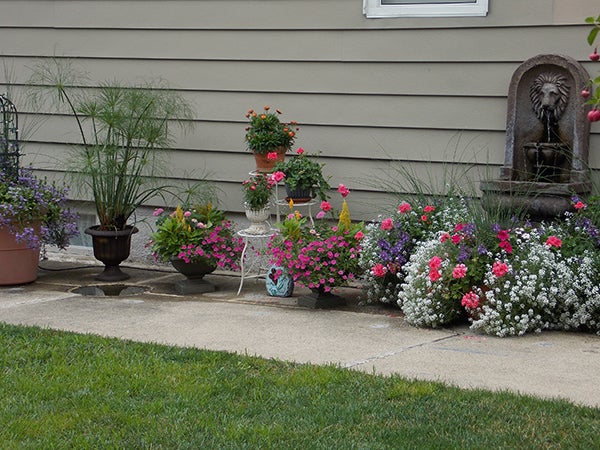Colors abound in blooming gardens
Published 9:00 am Sunday, March 1, 2015
Serendipity Gardens by Carol Hegel Lang
When the gardens are blooming there are more than 50 shades of color and oh so many shades of green. Then we have all of the different textures from smooth leaves, serrated and those covered with tiny hairs. We mustn’t forget the grasses billowing in the wind and the beautiful shrubs and trees. It is impossible to even think about how all of these plants can be so different and yet to alike.
Angelique tulips have double petals of pale rose with darker flushes and pale creamy edges that give me a very long bloom time in the early spring garden. My daffodils are many different shades of yellow with trumpet centers, some tall and some short. They give me a very long bloom time to enjoy them. Soon the alliums are beginning their spectacular display of several shades of purple and violet with their globe-shaped spheres adding another texture.
The bleeding hearts add elegance with their arching sprays of heart-shaped pink or white flowers in the spring shade garden. Hostas in many shades from deep green, blue and variegated with many different shapes to their leaves from rounded to pointed also grace the shade garden. One of my favorites in spring would be goatsbeard, standing tall with feathery plumes of creamy white and finely-cut leaves at the back of the garden for emphasis. Another flower with feathery plumes would be astilbe in shades of light pink, lavender and bright crimson. Not to be outdone by the other flowers, the blue of Virginia bluebells stands out in the spring garden with its long bloom time.
As the Asiatic lilies come into bloom, the garden comes alive with pale pink with raspberry spots on Elodie, brilliant yellow flushed with lime as pearl Jennifer struts herself. Yet others are creamy white with spotted maroon and a sunny yellow glow. As the Orientals come into bloom we see even more colors of rose pink with raspberry spots, white with russet speckles as well as many others in shades of ivory, yellow, pink, apricot, burgundy and red bicolors.
Cosmos brighten the cutting garden in shades of rosy pink, white, cranberry and several shades of bright orange while the bachelor buttons range in colors of white, blue, pink and wine-red to add so much color. Begonias in reds, pinks and orange are planted in containers throughout the garden. The white of alyssum or the many shades of purple and violet fill in the rock area of the garden or cascade down the sides of the many containers with bees buzzing around them in search of nectar.
The Victorian garden has many different daylilies in several shades of pink and the Echinacea in pinks that have double blooms. Monarda in several shades from purple, pink to the bright red attract bees also. Morning glories clamber up the trellises in shades of blue, purple and white as well as clematis in several colors bring color way up the pergola for enjoyment.
Marigolds in so many shades of yellow and orange throughout the gardens brighten up the fronts of each garden. Salvias in shades of red, pink, white and blue stand tall calling the hummingbirds to their nectar. Fragrant heliotrope in shades of purple was a must-have in the gardens of E.A. Bowles who wrote, “I must have it for my nose’s sake, so two beds are filled with it, one with a light colored and the other with a dark form … and I don’t know which enjoys them most, I or white butterflies.”
Cleome in both rose queen and violet queen sway with the breezes while their airy, whiskery-look flower heads attract the hummingbirds also. There are tall spikes of giant imperial larkspur in beautiful shades of blue, violet, rose, red, lavender, salmon, pink and white. Shirley poppies come in shades of red, rose, white and coral with single to double blooms with a cup-shape to make them irresistible. When the flower is done blooming the green seedheads add even more texture to the gardens. The bright orange of tithonia stand about six to eight feet tall and the butterflies are attracted to them. So many shades of colors fill the gardens all season for my enjoyment.
“Give me odorous at sunrise a garden of beautiful flowers where I can walk undisturbed.” — Walt Whitman
Carol Hegel Lang is a green thumb residing in Albert Lea. Her column appears weekly. Email her at carolhegellang@gmail.com.






